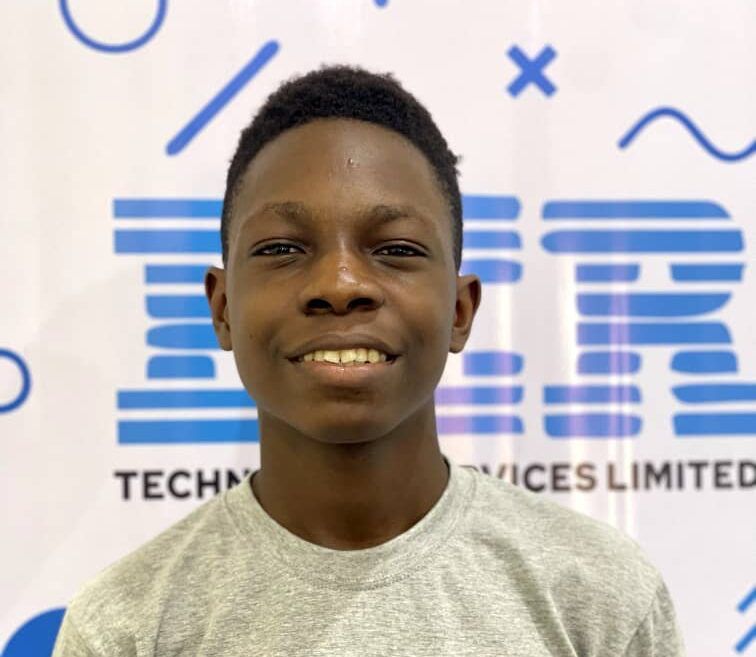How a Nigerian student built ChatATP to turn websites into AI-powered platforms — with just three users so far
When Obinna Chimdi asks ChatGPT to book a flight, the AI politely declines. It can suggest airlines, compare prices, and explain the booking process step by step. But actually clicking buttons and filling forms? That’s where ChatGPT draws the line.
For most people, this limitation is a minor inconvenience. For Chimdi, an 18-year-old Mathematics and Computer Science student at the University of Port Harcourt (UNIPORT) in Nigeria, it represented a fundamental problem worth solving.
“I realized that tools like ChatGPT are powerful, but they’re not built to solve problems end-to-end,” he explains. “If you ask them to analyze data and send the report to someone by email, for example, they stop halfway. You still need to copy, paste, or do the rest yourself.”
That frustration led him to build ChatATP, an AI agent designed to bridge the gap between what language models can understand and what they can actually do.
Learning to Code on His Father’s Phone
Chimdi’s journey into programming began at 16, armed with nothing more than his father’s mobile phone and an idol in Mark Zuckerberg. Within three months of teaching himself to code, he completed his first project — a social media platform called Wall Street, designed to connect business people.
“He was my idol,” Chimdi says of Zuckerberg. “I loved automations too. I wanted to have my own AI company, and I had to learn how.”
But building ChatATP proved to be his most ambitious undertaking yet. The platform took six months to develop, not just because of its complexity, but because Chimdi had to learn new skills along the way.
“I’m a backend developer; I could not find any frontend developers, so I had to learn. I couldn’t even get UI and UX designers,” he recalls. Everyone he approached as a potential co-founder declined, citing busy schedules.
What ChatATP Actually Does
The concept behind ChatATP is deceptively simple: give AI models the ability to perform actions on websites, not just talk about them.
Chimdi describes it as building “HTTP for AI agents” — a universal protocol that allows large language models like ChatGPT, Gemini, or Claude to interact with any website through specialized toolkits.
These toolkits function as translators between AI and the web. Each one exposes specific actions: checking flight availability on airline websites, sending emails through Gmail, creating contacts in HubSpot, or querying a university timetable. The toolkit defines what inputs it needs, what outputs it returns, and what safety rules govern its operation.
At the heart of the system is what Chimdi calls the Agents2 protocol — his attempt to standardize how AI models communicate with these toolkits. Just as HTTP standardized how web browsers fetch pages from servers, Agents2 aims to standardize how AI agents execute tasks across different platforms.
To use ChatATP, a website visitor types a natural-language prompt. The system processes this through the chosen AI model, determines which toolkit to activate, and executes the requested action. In theory, a user could book a flight, schedule a meeting, and send a confirmation email — all through conversational prompts.
The Reality Check: Three Users
For all its technical ambition, ChatATP faces a sobering reality: it currently has three users. His neighbor. Two classmates. That’s the entire user base.
The platform is decidedly technical, requiring users to configure API keys from major AI providers, install domain-specific toolkits, and select their preferred model. It’s a developer’s tool, not a consumer product.
Chimdi understands the challenge. Growing the user base would require more compute power, which costs money he doesn’t have. And raising funding with three users — all from his immediate circle — is virtually impossible.
“I could try to raise funding, but three users who happen to be neighbors and classmates would hardly impress investors,” an industry observer notes.
Swimming in a Sea of Well-Funded Competition
The AI agent space is crowded and moving fast. Open-source projects like AutoGPT and LangGraph allow developers to build autonomous agents and chain multiple tools together. Newer entrants like Lumio AI offer multi-model workspaces where users can switch between different AI models and compare outputs in real time.
These competitors don’t just have technical sophistication — they have robust developer communities and significant funding. Against that backdrop, ChatATP’s three-user base looks less like a startup and more like a proof-of-concept.
Yet Chimdi believes his Agents2 protocol offers something different: the flexibility to plug in multiple AI models and toolkits in one unified system. Most competitors focus on specific use cases or single-model architectures. ChatATP’s modularity could be its differentiator — if it can scale.
The Innovation Paradox
Chimdi’s story highlights a persistent paradox in African tech: exceptional talent constrained by limited resources. At 18, he’s built a technically sophisticated platform that addresses a real gap in AI capabilities. He taught himself frontend development when he couldn’t find collaborators. He created his own protocol when existing solutions didn’t meet his vision.
But innovation alone doesn’t guarantee success. In the AI space, where advances happen daily and competition is fierce, staying relevant requires resources, community, and momentum — three things ChatATP currently lacks.
The question isn’t whether Chimdi has built something impressive. He clearly has. The question is whether he can translate that technical achievement into a sustainable platform before better-funded competitors render it obsolete.
For now, ChatATP remains what it is: a bold experiment from a teenage developer in Port Harcourt, trying to give AI the arms and legs it needs to move beyond conversation and into action. Whether those three users will become 300, or 3,000, depends on whether Chimdi can find the resources to turn his protocol into a product the world actually uses.
In the fast-moving world of AI, time is the one resource even the most brilliant 18-year-old can’t code his way around.
ChatATP is available at chat-atp.com for developers interested in exploring the platform.




